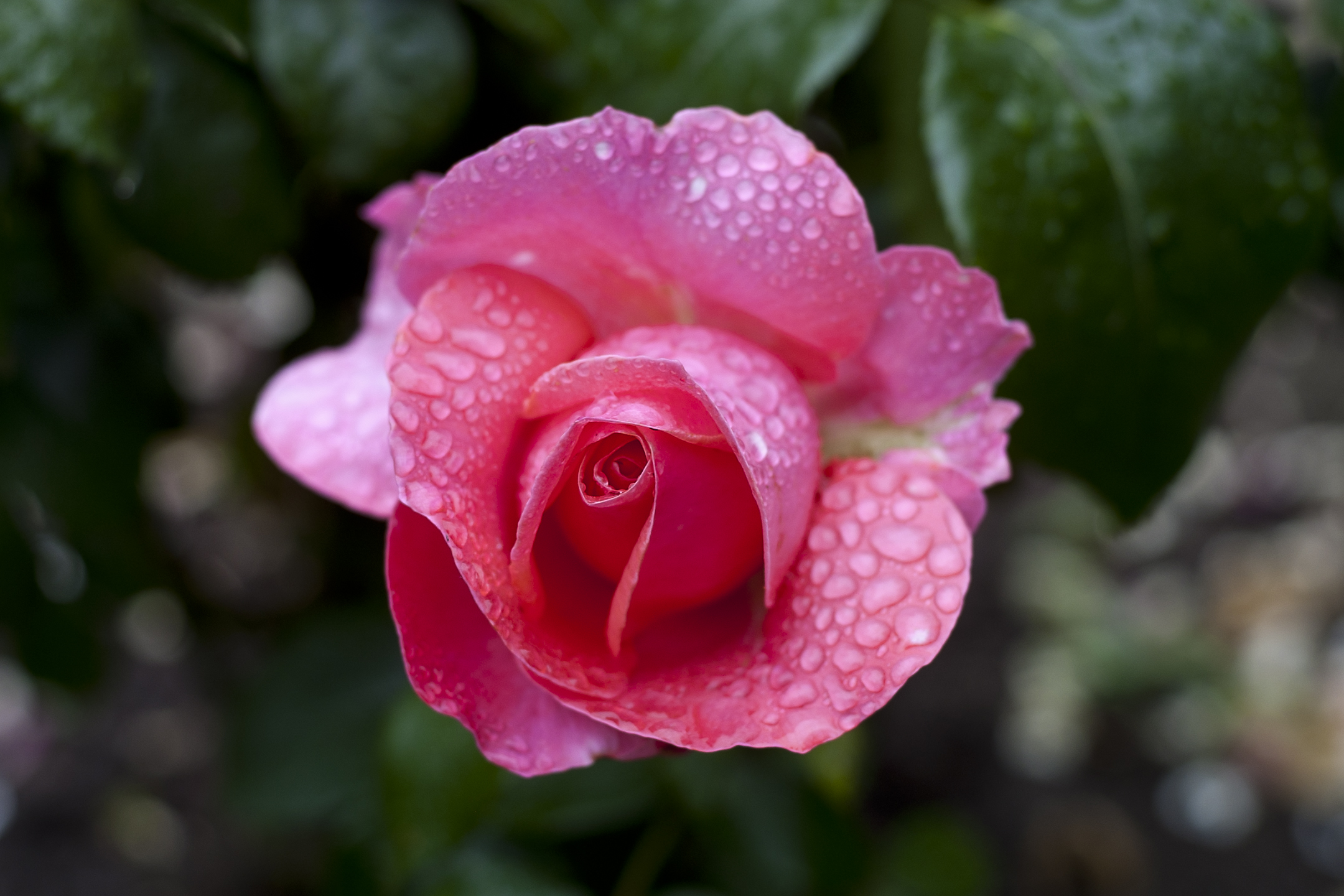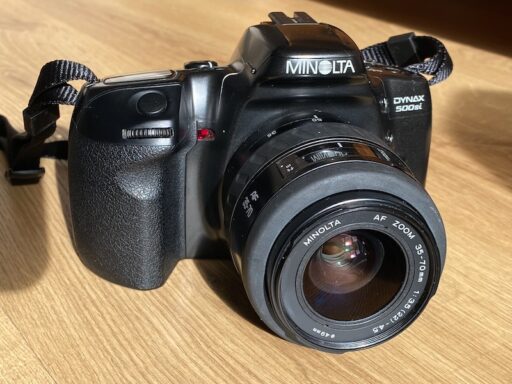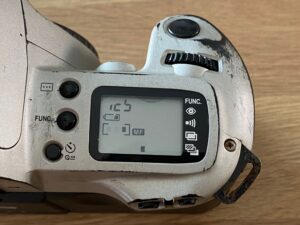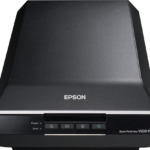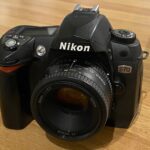Before we begin – yes, technically, there had been a Canon digital SLR prior to the D30, but that was a collaboration between Kodak, who supplied the sensor and Canon, who bolted this onto the back of an EOS 1V film body. So not really a DSLR, especially when you take in to account that it had a whole one megapixel of resolution. That’s… not great.
The D30 was a hotly anticipated camera and had the whole reputation of Canon sitting on its shoulders as the first fully “home grown” DSLR the company had produced. If the D30 had been a failure it would’ve been an extremely difficult uphill battle for Canon to catch up with Nikon who had just beaten them to market with their 2.74MP DSLR the Nikon D1.
The D30 and D1 were aimed at different users, however, with the D1 being firmly planted in the professional market in terms of both features and price. At $5500, the D1 was definitely out of reach for most amateur and hobbyist users. In contrast, the D30 was almost half the price (it launched at $2990) and came with a full 3MP sensor, making it both cheaper and higher resolution than the Nikon offering. Although it certainly was not considered a professional body, and definitely couldn’t be classed as cheap, it was nevertheless hugely attractive to a much larger audience. In short, it was a big deal.
This is what DPReview.com had to say about the D30 in October 2000:
The D30 comes fully loaded, filled with features and functionality you’d expect of a camera teetering on the edge of wearing a “Pro” badge (and probably more deserving than some of those that do), add to this the fact that Canon threw a curved ball by using the first ever multi-megapixel CMOS sensor to be seen in a production camera and you can see why the EOS-D30 is significant.
The other thing that makes the EOS-D30 special is that it (like the Fujifilm S1 Pro) is helping to open up the “prosumer digital SLR” market, the retail $3,000 may not be considered cheap, but there are considerable numbers of non professionals who can afford (and no doubt will buy) the EOS-D30.
For Canon EOS owners the D30 must surely be a very attractive way into the digital realm, Canon have been very careful, they know that many long term customers will buy D30’s, and that’s why although beta cameras have been around for a while there’s been a long delay for full production units to appear. It’s got to be just right.
https://www.dpreview.com/reviews/canond30 – October 2000
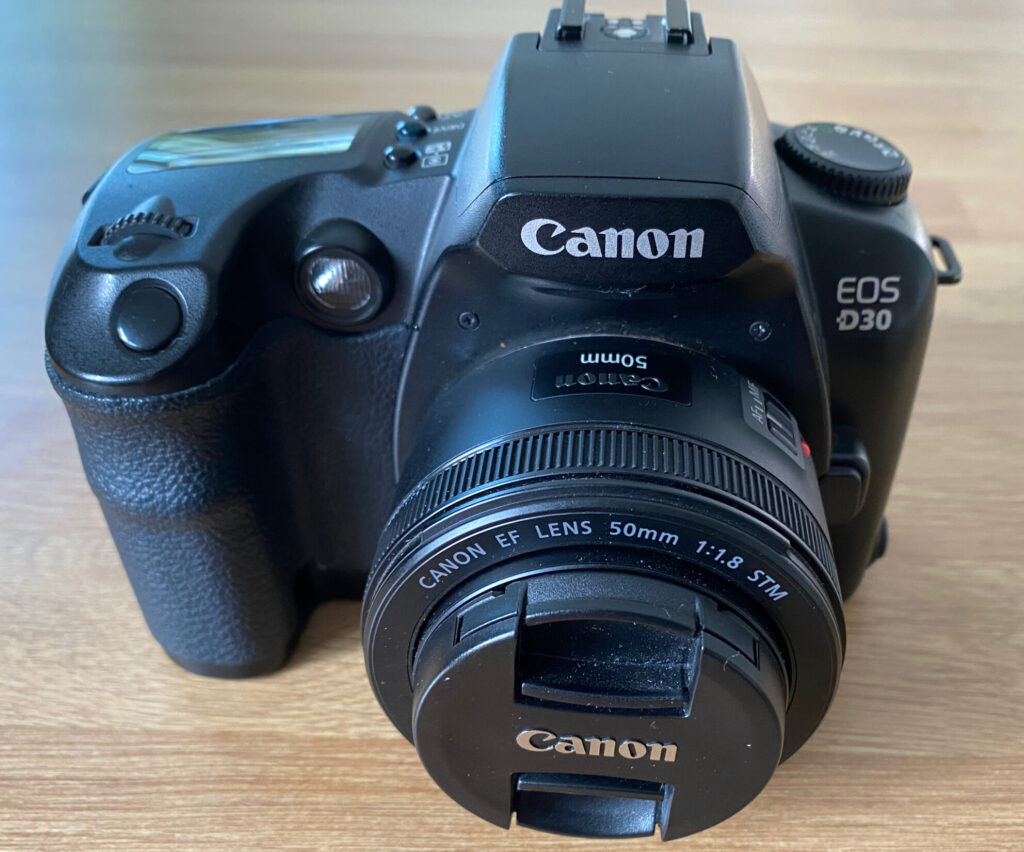
Having got the idea in my head that I needed to experience this significant moment in camera history and the birth of Canon Digital SLR’s, I set out to find the cheapest example I could, trying to keep to the rule that old, obsolete tech shouldn’t cost the earth. To my surprise, I discovered that the D30 has achieved “classic camera” status. This means there are fewer examples available, people now believe they’re collectibles and as such the prices are starting to rise. At the time of writing, it was not unusual to find them ranging from £50-60 for most working copies.
Of all places, I found my D30 on Amazon marketplace. I could hardly believe my eyes when I saw a “good used” body for £30 with free postage. It was worth a punt at that money, despite there being no photographs of the actual item and a very short description. It appeared to come from a small second hand camera dealer and what arrived a few days later can only be described as a camera in shockingly good condition. There are virtually no signs of use and I definitely got lucky here, especially as there was a 1GB CF card left in the camera also.
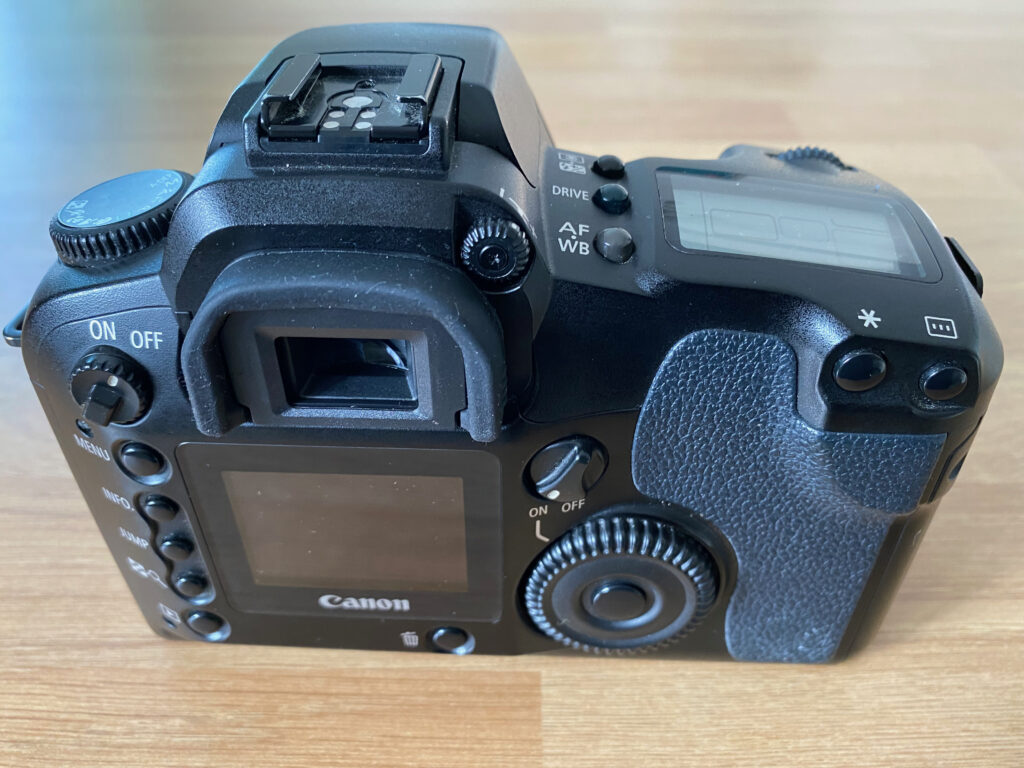
The only fault I can find with it, and I have no experience or other reference to know if this is a quirk of the D30 or not, is that it’s really difficult to tell if the image you’re taking is in focus. From looking at the test images I shot, it definitely achieves focus, but in the viewfinder it always looks slightly out. Before anyone says, it’s not the diopter adjustment – but who knows what may have happened to this body over the 22 years since it was manufactured.
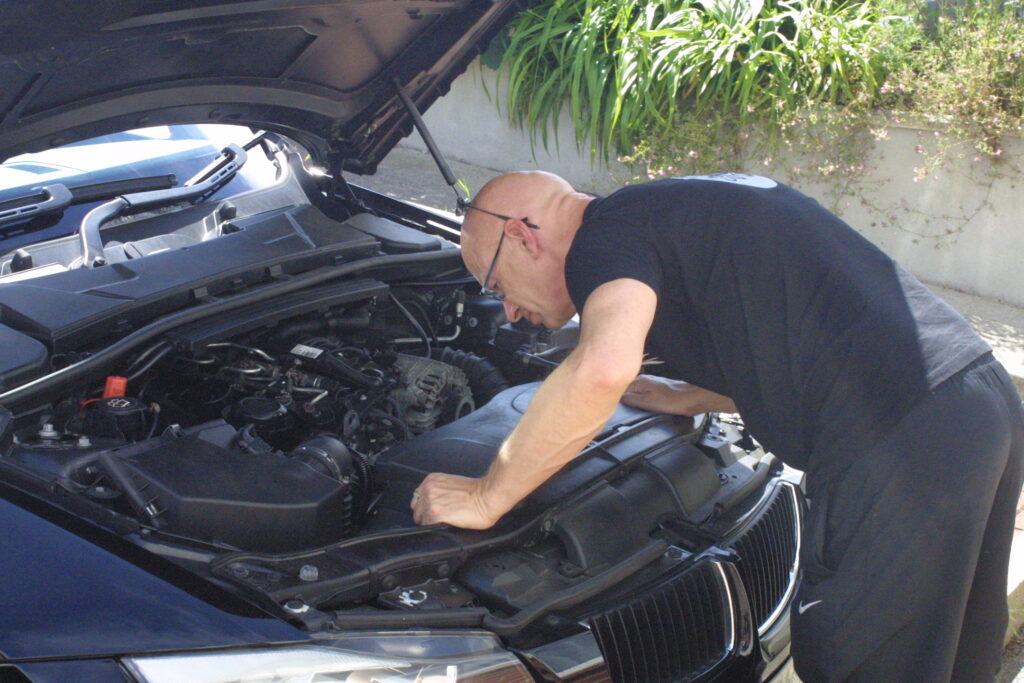
I’ve been really looking forward to using the D30 ever since I placed the order, I absolutely love using old technology and experiencing what it must’ve felt like to be at the forefront of a massive leap in terms of photographic imaging is fascinating. Let’s see what the D30 had in store when I took it out.
Ergonomics
There’s no escaping the fact that the D30 is an absolute unit of a camera. It feels very weighty to hold and I was convinced it’s the heaviest camera I’ve used to date. This is where it gets weird, because according to the figures on DPReview, both the 10D and 5D mark 1 are both heavier. This doesn’t make sense to me from just holding these bodies but they must be right and I’m not about to crack the kitchen scales out just to check.
The D30 is undeniably physically bigger, however. The grip is the deepest of any Canon camera I’ve used and the body as a whole has a build quality that makes you think you could knock nails into a block of wood and it wouldn’t so much as leave a mark. Even the CF card slot feels better made than other bodies – the cards fit snugly and securely in the guides all the way until the card is safely fixed in place. No doubt this camera was made to impress, to reassure new DSLR users and to last.
Overall, it’s classic Canon design and handling. Everything is where you’d expect it to be and there’s no need to find a copy of the manual if you’ve used any EOS film or digital body before. Those who purchased one of these from new must’ve been more than happy with their choice.

Features and controls
The first thing I noticed was the appearance of two physical off/on switches. I’ve never understood why Canon felt the need to give you a switch which would turn the control dial on and off. I cannot imagine a situation where anyone would accidentally scroll the wheel unintentionally, but I can imagine being very confused when I’ve inadvertently turned it off thinking it was the power switch…
Small things make a difference and I liked the fact that when you half press the shutter to wake the camera, it displays the current ISO on the information display on top of the body. This is particularly useful because it isn’t something which is permanently displayed but can easily be forgotten in use. The lack of a dedicated, labelled ISO button is a shame, although this is only really a minor inconvenience as it takes a few seconds to scroll the menu and select a new value, plus you can change the function of the “set” button to act as a shortcut to this menu feature if you like.
If you do enable this custom function, then the ISO is set via the top information LCD. This is really bizarre as you cannot access ISO like this in any other way, I pressed the set button and stared at the back screen for a while wondering why nothing was happening before seeing the information display had changed and I could now scroll through the options. Why this wasn’t the default, I don’t know.
All of the usual Canon features are present, including multiple metering modes, easy focus point selection, multiple drive modes and the standard one shot and AI focus modes. The only counter intuitive design choice from my perspective is the image review when zooming in to an image.
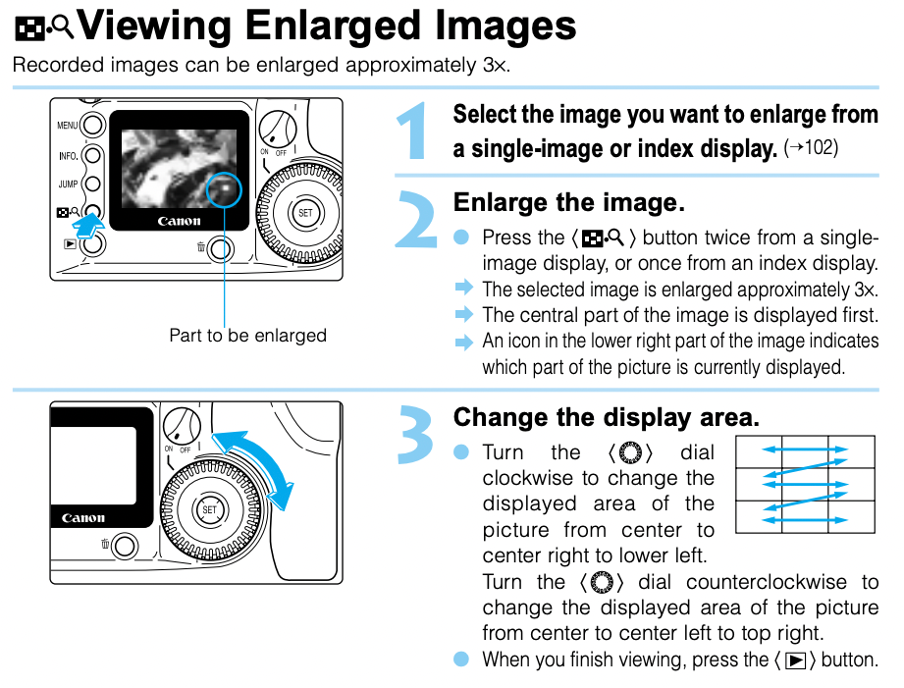
There’s only one level of zoom if you want to check an image more closely and then there’s the weird scrolling through 1/9th of the image at a time using the control dial. This is not a great way of looking at images you’ve taken, but lets be honest here the LCD, as with all old digital cameras, is basically useless for checking focus, exposure, colour or any other aspect of a given frame so we’ll cut it some slack here. By year 2000 standards, this was as good as it gets and there wasn’t an option to put a higher resolution, larger, more accurate display in, certainly not without adding hundreds of pounds to the cost.
Performance – what’s it like to use?
The D30 offers a whole three focus points, which is more than enough for most uses. Apparently, the focus system was lifted wholesale from the EOS 50/Elan II film camera, according to Rob Galbraith in his original D30 review (only available on Archive.org). I’ve never really had a problem with the EOS 50 auto focus, taking into account it was launched in 1995. It occasionally hunts or misses the thing you are meant to be focussing on, but other than that in both examples of the EOS 50 I’ve had it performs really well.
This is where it gets more odd. In the EOS 50, when you achieve focus you get that familiar red flash around the selected focus point to tell you focus is confirmed. If the D30 has this auto focus system then I cannot understand why it doesn’t have this feature. The indicated focus points in the view finder are just black squares printed into the focussing screen, there is no highlighting of selected points nor focus confirmation. Nowhere can I find an explanation as to why Canon did this, even the 99p special 1000FN film bodies have focus point highlighting. It takes some getting used to looking for the little green dot in the bottom right corner of the viewfinder but this is one quirk which is really quite off putting when you first start using the D30.
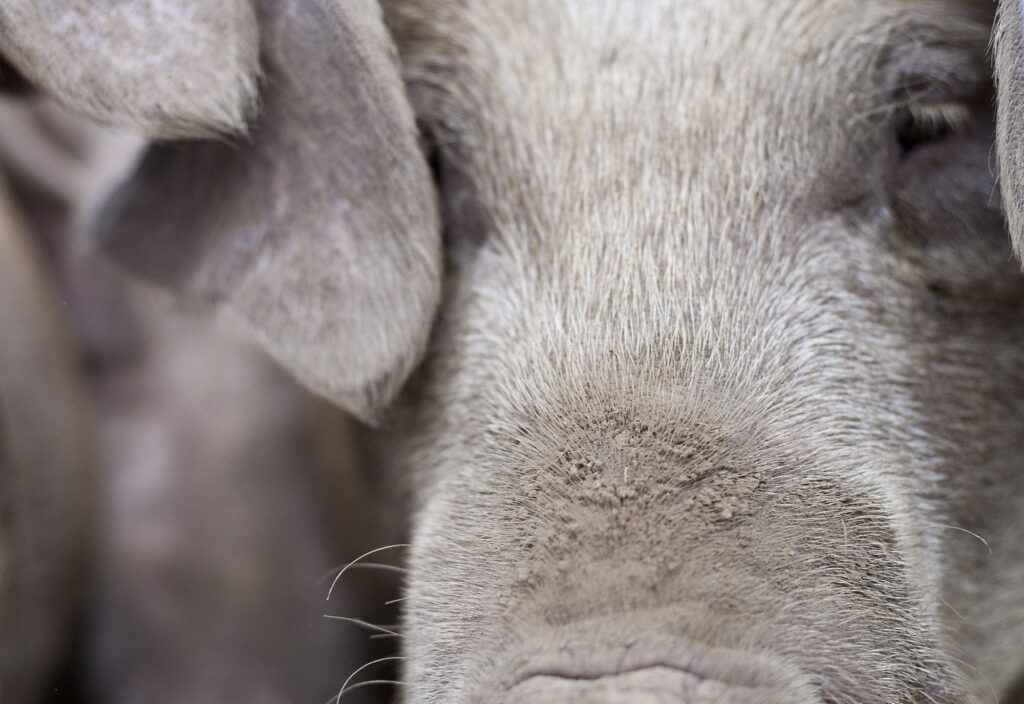
The autofocus on the D30 does not perform well. Whether this is a side effect of letting less light into a smaller mirror area than a full frame camera, or something else entirely, it’s a shame when you consider just how good the rest of it is. It’s absolutely fine if your subject is static, but anything moving, erratic or relatively low light and it loses the plot.
There are times when it will hunt and fail to find anything at all and it definitely seems to do this more often than the EOS 50 does. It wasn’t truly awful or deal breaking and I had to remind myself a few times that I’m used to auto focus systems on much newer technology which naturally have snappier performance. In the context of a 22 (27 if you believe it’s from 1995) year old AF system, it’s acceptable.
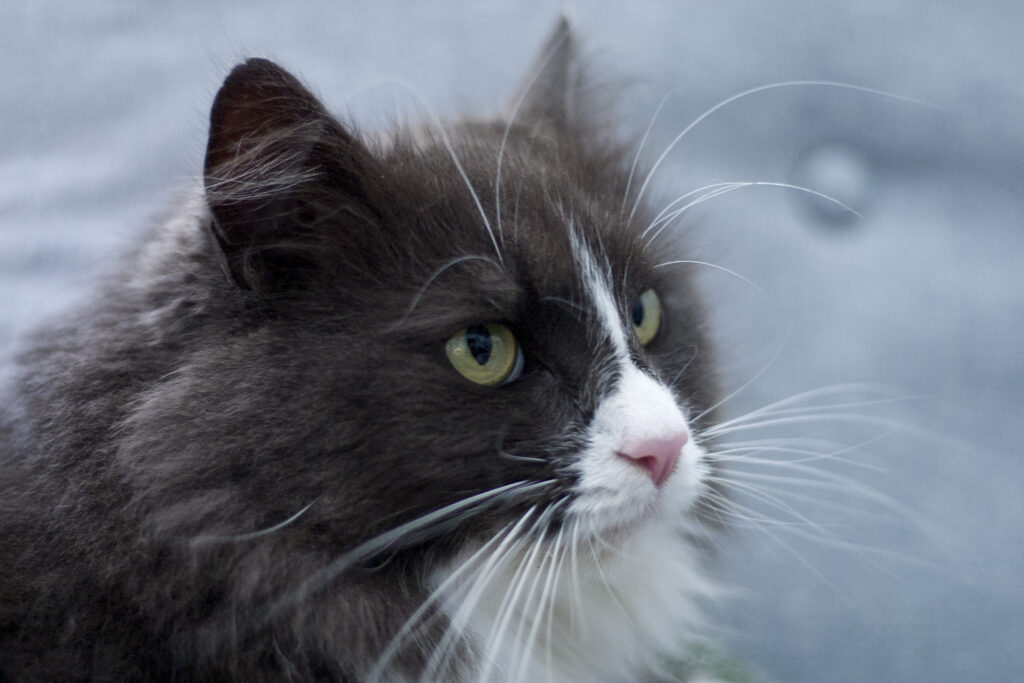
A lot of D30 reviews bemoaned the speed of writing files out to the card, but on closer inspection this seems to be the fact that people were using micro drives (awful things) and newer CF card technology gives much better performance today. There are some inexplicable pauses when shooting multiple frames in quick succession and this has been commented on before – it’s odd, but not the end of the world.
I actually found the speed of the D30 to be more than acceptable. Start up time was ok, even though it has a delay, and the time taken from pressing the shutter to reviewing the image was definitely quicker than on a 10D, but that has to write twice the quantity of data per image to the card so that perhaps explains the performance difference. It can take three frames in fairly rapid succession and then more slowly towards seven, at which point it stops responding to flush the buffer to the card. I couldn’t notice any discernible shutter lag and overall, it was just a pleasure to use this camera.
Image quality
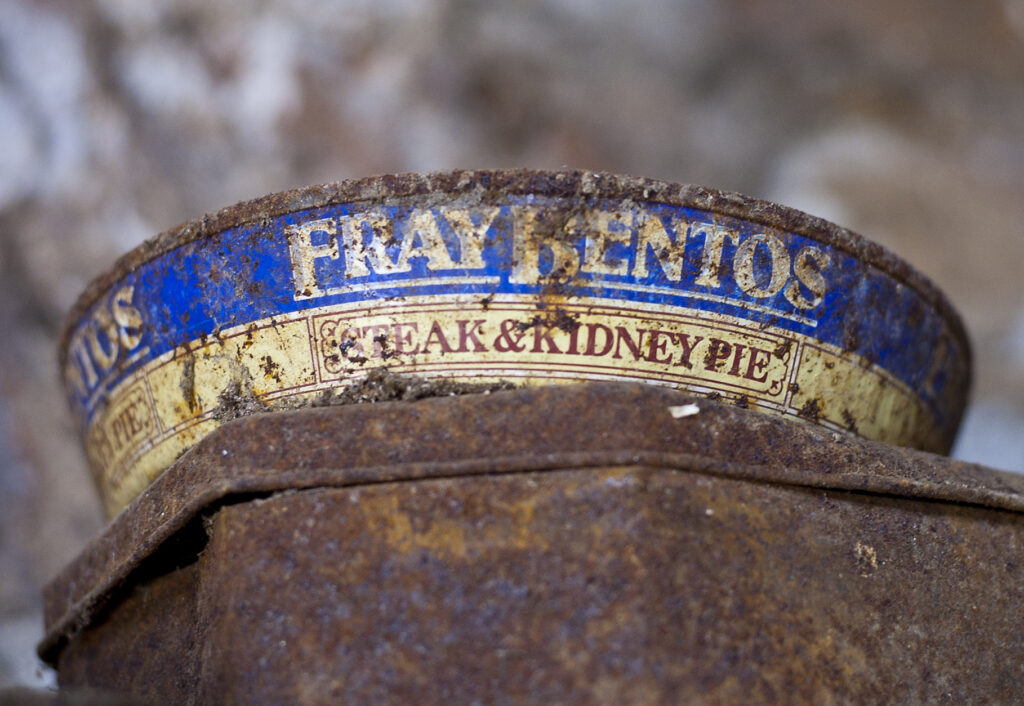
The D30 outputs three megapixel images at a resolution of 2160 x 1440, giving a total pixel count per image of 3,110,400. A modern smartphone camera will have a sensor resolution of at least 8mp and usually over 12. The D30 must surely produce really poor images with such a low resolution? Well, this is where the technicalities start to kick in. Yes, of course 3mp means you don’t have a massive image to start with, you’re largely out of luck if you need to crop and it will affect the level of detail the sensor can resolve. Having said that, as Apple bang on about year after year, what matters is the quality of the sensor in terms of pixel size, the amount of light each receptor on the sensor can receive and other factors beyond the scope of this short retrospective. In summary, it’s complicated.
To simplify, an HD TV displays images at a resolution of 1920 x 1080, meaning there are 1920 pixels (tiny squares which can be one single colour at a time) across the screen, and there are 1080 rows of these pixels. This gives a decent picture until you start to increase the size of the TV. As the display gets larger, the number of pixels stays the same, meaning the only way to fill the bigger space is by making those pixels physically larger and this means you are more likely to be able to see them, degrading the apparent image quality. This is why bigger is not always better, it is also why “4K” TV’s have rapidly become the standard above 32″ simply because a 4K display contains more pixels and therefore we can shrink them down again to make the image clearer and more detailed.
Therefore, the D30 sits somewhere between HD (1920 x 1080) and UHD (3840 × 2160) in terms of the image resolution it can output. Display a D30 image on an HD TV and it’ll look great, put it on a 4K TV and it’ll start to look odd or slightly blurry in places. What does this mean for us using this camera in 2022? Realistically, very little. 3MP is absolutely the lowest resolution Canon could sensibly have launched a DSLR at without it being quite pointless. Whilst there is no headroom for mistakes or recovering details, 3MP will give you an image that looks just fine on a tablet, phone or computer screen and will happily print out at reasonable detail at 7 x 6 or maybe slightly larger. Not entirely impractical, then, even today.
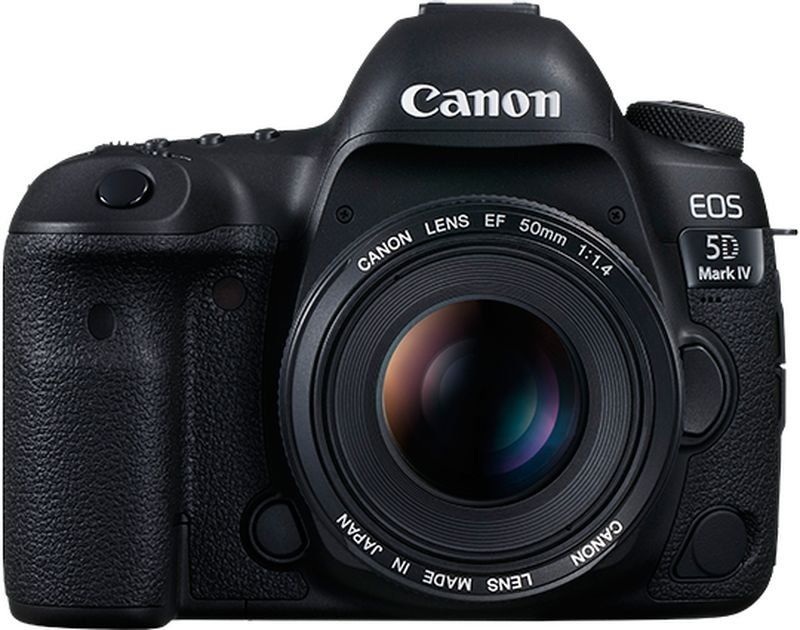
Compared to any later DSLR then there is a noticeable lack of detail, for example if you take a picture of a person or animal with a modern camera, you can make out individual hairs. D30 images have detail but the resolution of the sensor means that some of these finer details are less distinguishable than we’re all used to. In the previous image of the cat, a 10D, 300D and so on would give you the same image but with much finer detail in the fur.
This doesn’t mean the quality of the images are poor, when considered in the context of the capabilities of a 3MP sensor, then it actually does quite a decent job of outputting clean, vibrant and reasonably sharp images. As always, results vary with the lens, lighting and subject, but generally the D30 produces those trademark Canon image qualities that later bodies were famed for – the beginnings were clearly present in this body.

Taking into account the fact this is a 22 year old camera, it is impressive that the sensor is able to produce usable images at ISO 1600. There is obvious noise in the image but this comes across more as a pleasant “grain”, rather than blobs of random colours that you can sometimes get if you really push things at higher ISO’s. The RAW files don’t appear to have the level of information required to enable you to rescue details from blown highlights or underexposed shadows in the way that you’d expect from a more modern RAW file, but I think this is also to be expected.
Conclusions and final thoughts
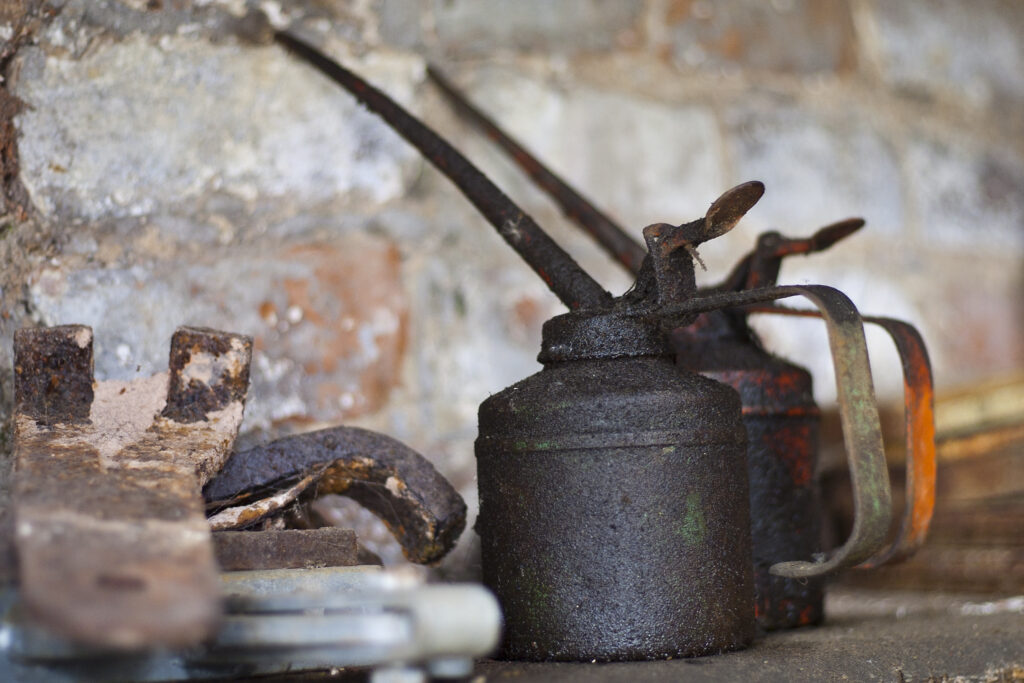
Undoubtedly, the D30 was a revolutionary camera. It has the feel of a device that Canon threw absolutely everything at in an effort to impress customers and gain massive market share. History tells us that it definitely succeeded and propelled Canon to new highs in photography. The EOS film line of cameras is certainly in the D30’s DNA and that heritage of sensible, intuitive design choices followed through to make an experience that was both excitingly new, yet reassuringly familiar.
I can only conclude that anyone picking one of these up in 2000 would’ve just been blown away by the performance it offered, the novelty of being able to take hundreds of images for “free” and the sheer magic of digitally developing pictures on a computer from RAW files. Once they saw the image quality and noise performance, ebay must’ve been flooded with old film bodies being sold off in a hurry – I wish I’d been paying attention!
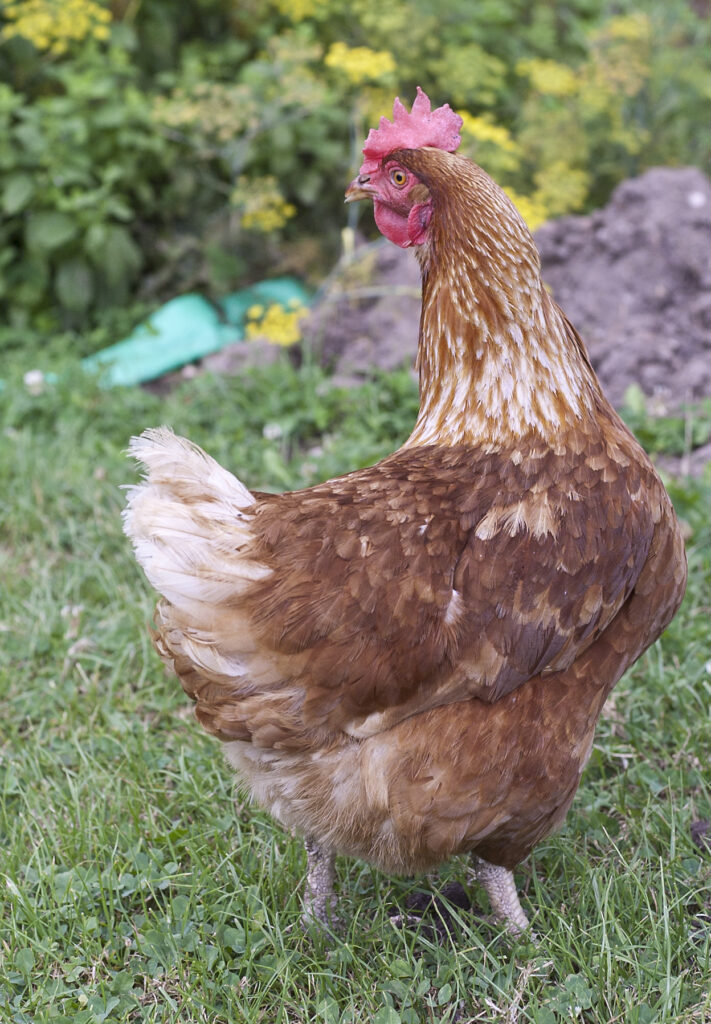
It is absolutely incredible to think that just three years after the launch of the D30, Canon released the 300D. In that short space of time, the SLR camera market had gone from perhaps two models per manufacturer, each retailing for £3-5000, to a situation where there truly was something to suit all needs, starting at just £800. That kind of price reduction is crazy enough, but then consider that you’d doubled the resolution, performance, speed, number of focus points, focus speed… everything was advancing at a rapid pace.
This kind of change is normal for technology as it develops. Anyone who remembers the sheer pain of buying a PC in the 1990’s will attest to the fact that you could spend £5000 on a PC in January, and it would be obsolete by April and those new machines were twice the speed at half the price.
Is the D30 still a sensible purchase for the thrifty photographer? No. Not because it isn’t a good camera – it is, but because it has reached an age where people are now expecting you to pay a fortune for their old tat. I got lucky with mine – since buying it, I cannot find another example for less than £60, which is double the price I paid and the absolute upper limit I’d be prepared to pay for a camera this old.
Value for money? Unbeatable (at the time of writing this review). I have no doubt that Canon will sell every single D30 they ever produce, the question is can they make enough of them?
DPReview – October 2000 – https://www.dpreview.com/reviews/canond30/20
I’m not being tight here, there’s a real difference between collecting and using. As soon as prices reach the collecting point, there’s really only losers as people who are desperate to fill a gap on their shelves are either willing, or feel forced to, pay ever higher prices which then removes the options available to anyone who simply wants to have a bit of historical fun.
Considering the rising prices, the D30 is really not worth it when you also take into account the image quality it produces. I’ve used a lot of old DSLR’s in the last month or two and every single one of them has produced files of such high detail and quality that I’d be more than happy if they were my only option and I’d not have any concerns about making high quality prints from them.
The D30, however, is just too physically limited by the sensor to make it possible to recommend as something you would use today. The experiences I’ve had have proven to me that old absolutely does not mean obsolete – but there is a limit and I think the D30 is it. From a historical viewpoint it’s really impressive and really nice to have experienced, but this is not the friend of the budget photographer – get yourself a 350, 10 or 20D for next to nothing and you will have a seriously brilliant imaging tool.
Share this post:

